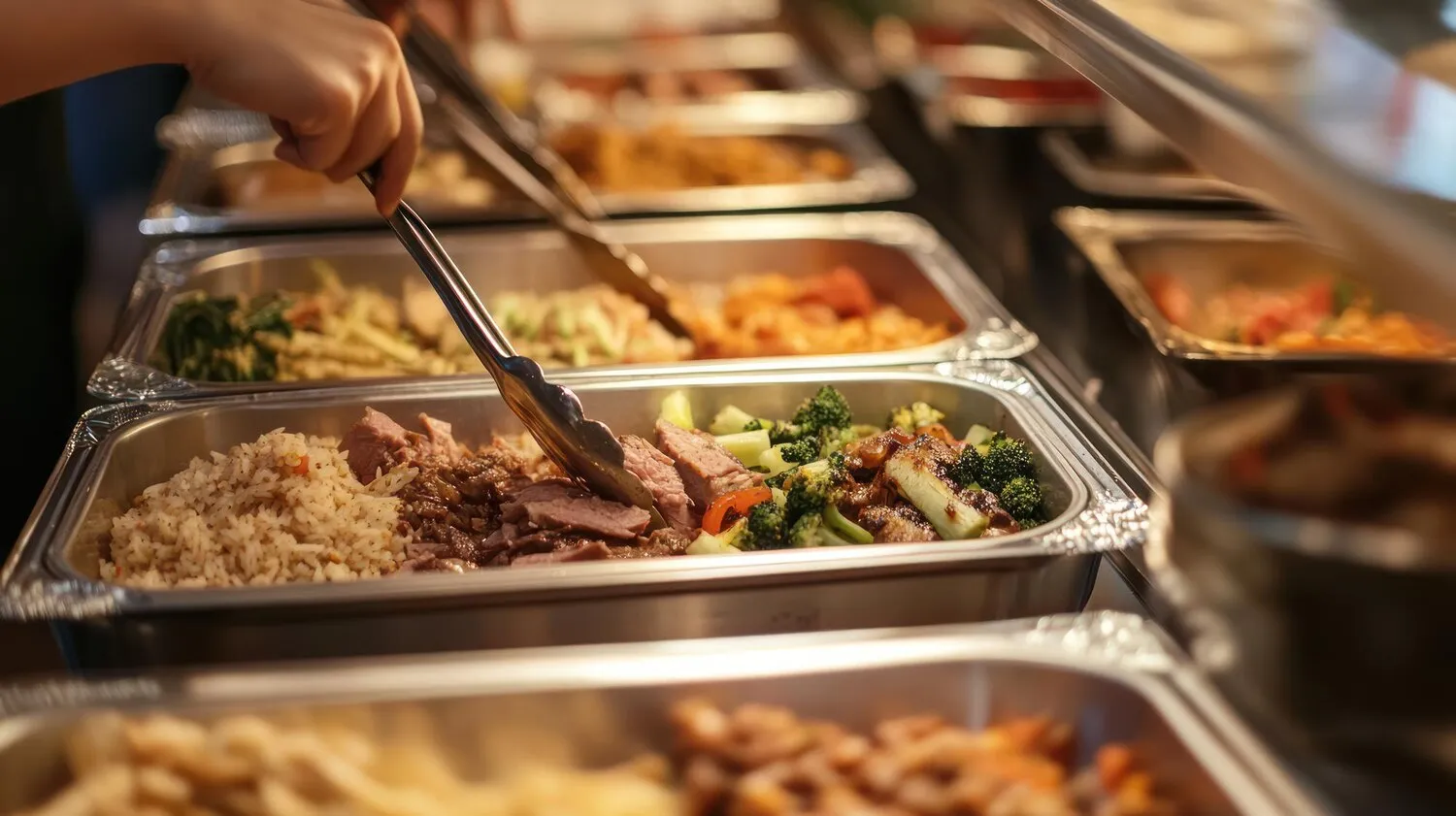
Buffet
Offers a varied buffet with salads and other dishes.
Nutrition Facts
* The % Daily Value (DV) tells you how much a nutrient in a serving of food contributes to a daily diet. 2,000 calories a day is used for general nutrition advice.
The modern buffet finds its roots in the Swedish 'smörgåsbord,' which dates back to the 16th century. This evolved from a simple appetizer table into a more elaborate spread by the 18th century. The smörgåsbord gained international popularity at the 1939 New York World's Fair, introducing the concept to a wider audience.
Buffets represent abundance, choice, and a communal dining experience. They are often associated with celebrations, gatherings, and situations where catering to diverse preferences is important.
Social Gathering
Buffets encourage interaction and allow guests to mingle as they select their food. They provide a relaxed atmosphere where people can choose what and how much they want to eat.
Abundance and Celebration
The sheer variety and quantity of food on display signify abundance and can create a celebratory atmosphere, making buffets popular for special occasions.
Efficiency and Convenience
Buffets are a practical solution for feeding large groups, as they allow guests to serve themselves and minimize the need for individual orders and complex meal preparation.
A buffet aims to offer a broad range of flavors, from fresh and light to rich and savory, with sweet options for dessert. Variety is key, so no single dominant flavor defines it.
The specific flavors in a buffet depend entirely on the dishes offered. Salads emphasize fresh, crisp, and sometimes tangy flavors. Hot dishes can feature roasted meats, seafood, pasta, or vegetable-based entrees with savory, rich sauces or flavorful spices. Desserts provide sweetness, richness, and texture contrast.
Survey the Landscape
Before filling your plate, take a walk around the entire buffet to see all the options. This will help you prioritize the dishes you really want to try and avoid filling up on less appealing items.
Start Small
Take small portions of each dish to sample them before committing to a larger serving. This reduces food waste and allows you to try a wider variety of items.
Prioritize Hot Foods
Focus on hot foods first, as they are more susceptible to temperature changes and potential food safety issues if left at room temperature for too long.
One Plate at a Time
Avoid piling food high on your plate, as this can lead to mixing flavors and textures. Use a clean plate for each course (salad, entree, dessert) to maintain the integrity of each dish.
Stay Hydrated
Drink water in between courses. This helps to keep you from over eating and helps aid in digestion.
Explore additional Buffet dishes and restaurants
Explore BuffetDiscover top dining spots and culinary experiences in Macaé.
Explore MacaéLearn more about the food culture, restaurant scene, and culinary heritage of Brazil.
Explore Brazil